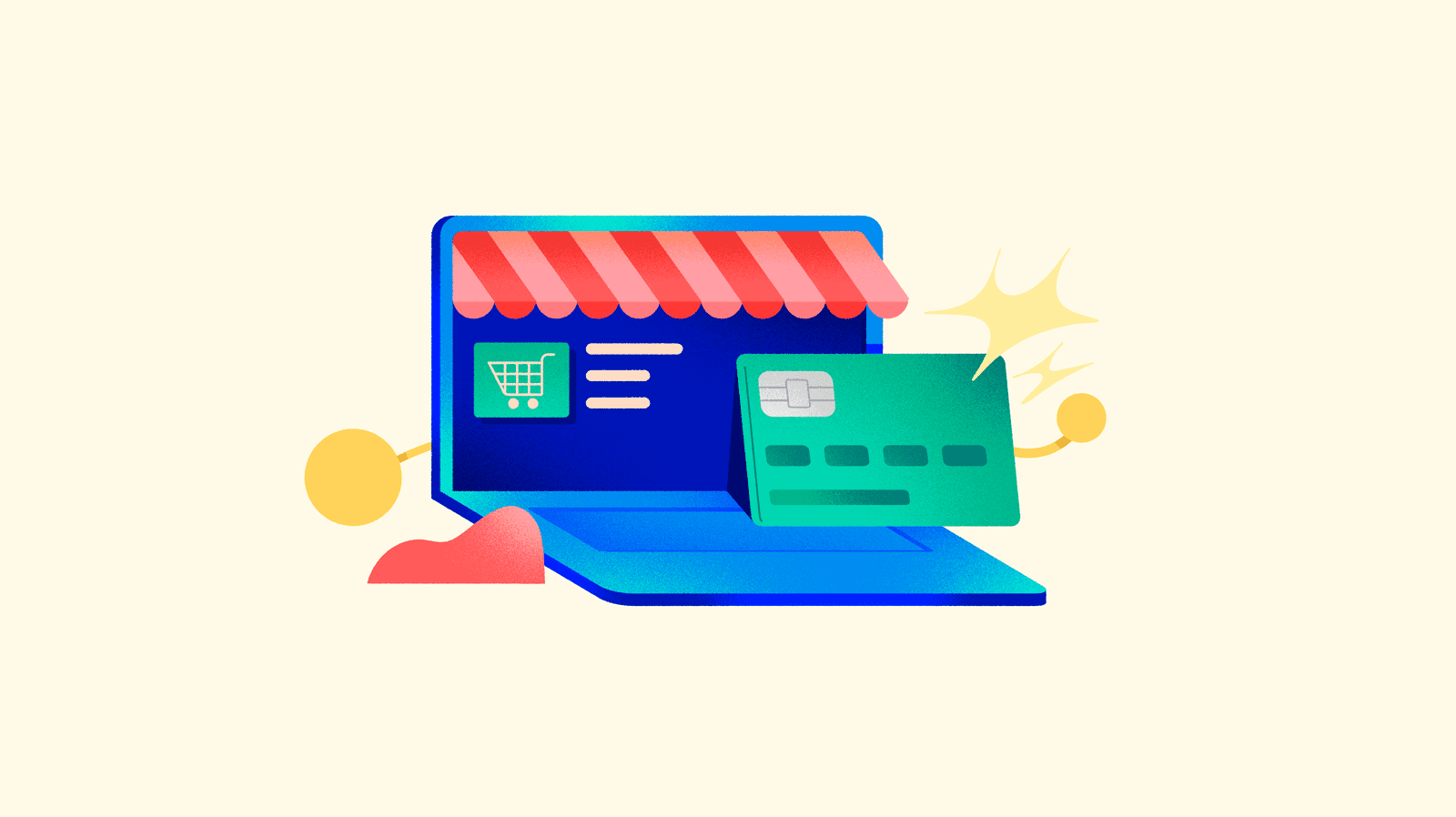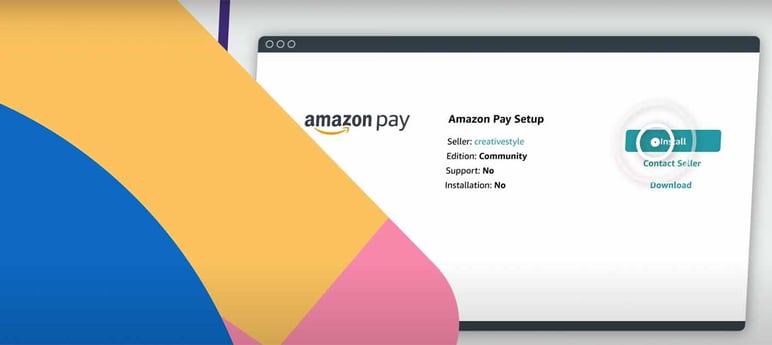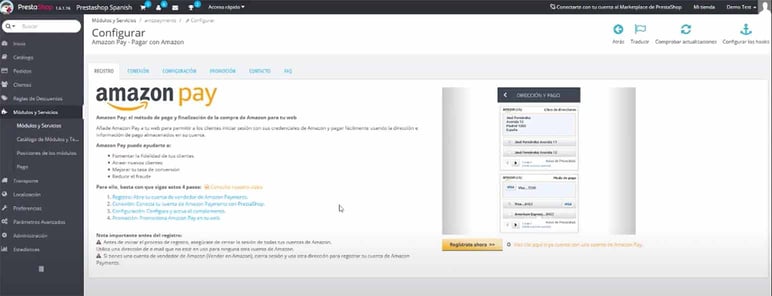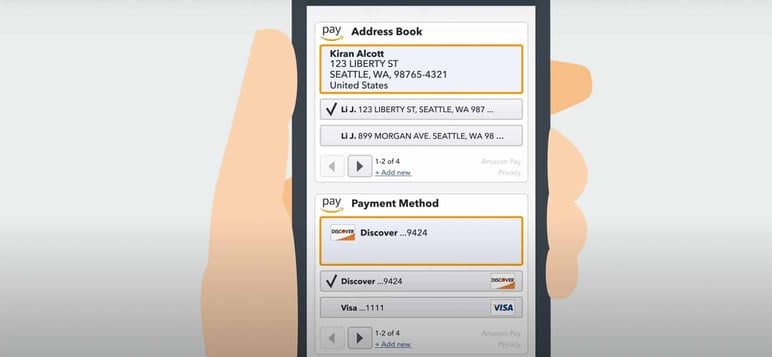
Paying for online purchases with a credit card is users’ favorite way to pay, but there is a more convenient alternative: to use a payment system that stores customers’ banking information, saving them from having to write that information into a form for each purchase at every shop or marketplace visited.
In addition, these systems protect users’ data; thus, they are even more secure for making online purchases.
PayPal was the payment gateway that was the most popular, but in recent years many other alternatives have cropped up like Stripe, Square, Google Pay, or Apple Pay.
Amazon, the largest marketplace in the world, never passes up an online business opportunity. Therefore, it also offers its own secure online payment system: Amazon Pay.
Is it a good idea for you to integrate it as a payment method on your online shop? We’ll tackle that question for you today.
What is Amazon Pay?

Amazon Pay is a payment system that is offered for users and sellers outside of the marketplace.
This means that you, as an independent seller, can contract Amazon Pay and offer it as a payment gateway on your own online shop. Buyers with an Amazon account can use their Amazon credentials to pay on your site more quickly. Thus, they can choose from their credit and debit cards and their address book saved on Amazon, without having to add them manually.
Just like PayPal and any other external gateway, this system will keep you from having to do the programming for your own payment system and it’s very easy to add to your site. The problem is that all the data belonging to your customers will also be in Amazon’s hands.
→ Is PayPal also a good option for your ecommerce site?
Advantages of offering Amazon Pay to your customers
- Brand confidence: a good part of online buyers associate Amazon with a secure shopping experience. They will feel more at ease paying through the Amazon marketplace system rather than a payment screen that is unknown to them.
- Speed: second guessing is the biggest enemy of online shopping. Instant payment gateways like Amazon Pay avoid the need to create new accounts, speed up the process, and cut down on the number of shopping carts that are left with unpurchased items.
- Integration: Amazon pay can be integrated with voice-enabled search engines, one of the up-and-coming players of the future of ecommerce. Users can make purchases using Amazon Pay and voice commands with Alexa.
- Security: Amazon Pay includes technology to detect fraud in online payments for both users and for you.

How to use Amazon Pay on your online shop
Offering Amazon Pay on your online shop is very easy and it will work on all versions of your site (desktop and mobile versions). The payment system will be offered on your own website, so buyers will never leave your shop or be redirected to other windows during the payment process.
To start to offer it, you only have to contract it as you would with any other payment gateway and implement it as part of your checkout process.
The best part: Amazon Pay is totally free for sellers. You won't pay transaction fees, neither membership fee, currency conversion fee, foreign transaction fee... You'll only need to check if your card issuer could add some specific fees for foreign shoppers.
→ Are you also thinking about selling on Amazon? Find how in this guide
Implementing Amazon Pay in 3 steps
Step 1: Registration

You need to register on Amazon (we all know that the marketplace loves to collect data).
It’s not the same process as registering as a seller on Amazon. To use Amazon Pay, you have to open an account with Amazon Payments. They’ll ask you for some personal, company, bank, and tax details which will have to go through a verification process before you can use the service.
Step 2: Implementation

The next thing you have to do is enable the Amazon Pay platform on your online shop through an API. Your technical team or specialist can do this without too much trouble.
There are API and SDK integration guides to help, and you can find them here.
Step 3: Production

One you have done tests to ensure that your integration is risk, you can launch the Amazon Pay payment option on your website.
If you have problems with the implementation or you think it could be very complex for you, the majority of the ecommerce platforms offer preconfigured connectors to help you integrate Amazon Pay. You’ll find these connectors for Magento, Shopify, WooCommerce, PrestaShop, OpenCart, and BigCommerce.
→ Don’t miss them: The most popular online payment methods at the moment
Conclusion
If you want to improve your customers’ online shopping experience and offer a safe payment system that is trustworthy and fast, a payment gateway is the best option.
Adding Amazon Pay as a payment option can win over a lot of customers who trust and are familiar with the Amazon marketplace. You only have to keep in mind the disadvantages of paying fees to Amazon per transaction and be comfortable with the marketplace knowing about your sales and customer history.
Adding Amazon Pay to your ecommerce site is not at all complicated, especially if you use connectors and specialized partners. Remember that Sales Layer offers 3 exclusive connectors for selling on Amazon and we are one of the first official integrators of Amazon Vendor API in Europe.
The Sales Layer PIM solution will allow you to keep your product information organized and automated so that you can offer the best possible user experience: try it for free and we’ll help you with whatever integrations you need.









